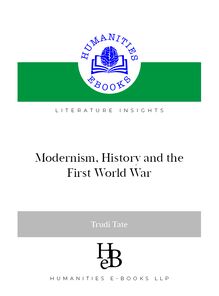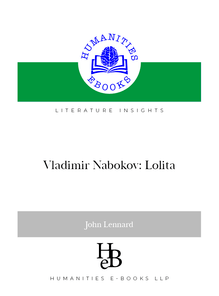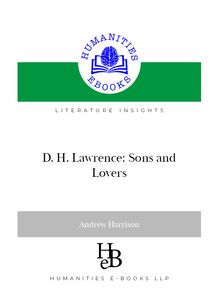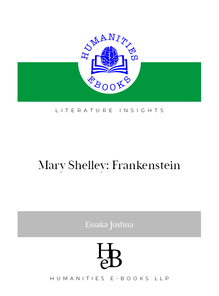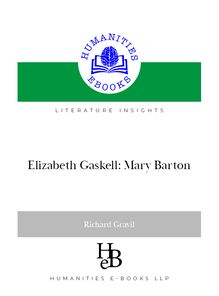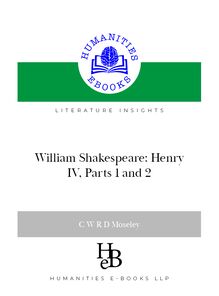-
 Univers
Univers
-
 Ebooks
Ebooks
-
 Livres audio
Livres audio
-
 Presse
Presse
-
 Podcasts
Podcasts
-
 BD
BD
-
 Documents
Documents
-
- Cours
- Révisions
- Ressources pédagogiques
- Sciences de l’éducation
- Manuels scolaires
- Langues
- Travaux de classe
- Annales de BEP
- Etudes supérieures
- Maternelle et primaire
- Fiches de lecture
- Orientation scolaire
- Méthodologie
- Corrigés de devoir
- Annales d’examens et concours
- Annales du bac
- Annales du brevet
- Rapports de stage
La lecture à portée de main
102 pages
English
Découvre YouScribe en t'inscrivant gratuitement
Je m'inscrisDécouvre YouScribe en t'inscrivant gratuitement
Je m'inscris
Obtenez un accès à la bibliothèque pour le consulter en ligne
En savoir plus
En savoir plus
102 pages
English
Obtenez un accès à la bibliothèque pour le consulter en ligne
En savoir plus
En savoir plus

Description
A detailed commentary on the poetry of Hopkins, exploring the significance of contemporary cultural issues and the poet's life as Catholic convert and Jesuit priest.
Sujets
Informations
| Publié par | Humanities eBooks |
| Date de parution | 11 janvier 2021 |
| Nombre de lectures | 0 |
| EAN13 | 9781847600127 |
| Langue | English |
| Poids de l'ouvrage | 1 Mo |
Informations légales : prix de location à la page 0,0000€. Cette information est donnée uniquement à titre indicatif conformément à la législation en vigueur.
Extrait
Literature Insights General Editor: Charles Moseley
Running Head 1
Gerard Manley Hopkins: Selected Poems
John Gilroy
http//www.humanities-ebooks.co.uk For advice on use of this ebook please scroll to page 2
Publication Data
© Jon Gilroy, 2007
he Autor as asserted is rigt to be identified as te autor of tis Work in accord-ance wit te Copyrigt, Designs and Patents Act 1988.
Publised byHumanitiesEbooks.co.uk Tirril Hall, Tirril, Penrit CA10 2JE
Reading and Listening Options
*To use te navigation tools, te searc facility, and oter features of te Adobe toolbar, tis Ebook sould be read in default view. *To navigate troug te contents use te yperlinked ‘Bookmarks’ at te left of te screen. *To searc, expand te searc column at te rigt of te screen or click on te bin-ocular symbol in te toolbar. *For ease of reading, use <CTRL+L> to enlarge te page to full screen *Use <Esc> to return to te full menu. *Hyperlinks appear in Blue Underlined Text.
Licence and permissions
his book is licensed for a particular computer or computers. he file itself may be cop-ied, but te copy will not open until te new user obtains a licence from te Humani-ties-Ebooks website in te usual manner. he original purcaser may license te same work for a second computer by applying to support@umanities-ebooks.co.uk wit proof of purcase.
Permissions: it is permissible to print sections of te book (in draft mode) for your own use, but not to copy and paste text.
ISBN 978-1-84760-012-7
A Note on the Author
John Gilroy took his BA at the University of Newcastle and his MPhil at the Uni-versity of Warwick. He is co-author ofA Commentary on Wordsworth’s ‘Prelude’ 1-5(London: Routledge and Kegan Paul, 1983) and has contributed to various liter-ary publications. He was Senior Lecturer in English at Anglia Ruskin University, Cambridge from 1974 until 2006, and is a course director for the University of Cam-bridge’s International Programmes.
Acknowledgments
The author wishes to thank: Charles Moseley for valuable editorial advice; The Na-tional Portrait Gallery, London, for permission to reproduce the two portraits of Hop-kins; and the Tate Gallery, Millbank, London for permission to reproduce the picture, ‘Snowstorm – Steam Boat off a Harbour’s Mouth’ by J. M. W. Turner. Work in copy-right is reproduced by permission of Oxford University Press on behalf of the British Province of the Society of Jesus.
Gerard Manley Hopkins: Selected Poems
John Gilroy
Bibliographical Entry:
Gilroy, John.Gerard Manley Hopkins: Selected Poems. Literature Insights. Tirril: Humanities-Ebooks, 2007
In memory of Mgr K.F.Nichols (1929–2006) Poet and teacher
Contents
A Note on the Author Acknowledgments
Part 1. Life and Times 1.1 Early life and Schooldays 1.2 Oxford 1.3 Conversion to Catholicism 1.4 Hopkins the Jesuit
Part 2. Strategies 2.1 Introduction 2.2 Inscape 2.3 Inscape of Poetry 2.4 Instress 2.5 Sprung Rhythm
Part 3. Reading Hopkins 3.1 ‘The Wreck of the Deutschland’ Part the îrst Part the second 3.2 Selected Poems
Part 4. Reception
Part 5. Bibliography 5.1 List of Abbreviations Used in the Text 5.2 Recommended Reading Hyperlinked Materials Other Literature Insights: Now Available
Part 1. Life and Times
1.1 Early life and Schooldays
Gerard Manley Hopkins was born in 1844 at Stratford in Essex, the eldest of nine children, several of whom were talented. Two of his brothers, Arthur and Everard grew up to be artists and illustrators for prominent publications such asPunchand theIllustrated London News. A brother, Lionel, became a Consul in China and an expert on the Chinese language, while a sister, Grace, had skills as a musician and com-poser. The children’s father, Manley Hopkins, acted as Consul-General for Hawaii, pursued a profession as a marine insurance adjuster and was, by degrees, mathemati-cian, poet, novelist and reviewer. His wife, Kate, was well-educated with literary and musical tastes and a competence in languages, and his sister, Ann (‘Aunt Annie’), a talented painter, produced the portrait of G. M. Hopkins at the age of fourteen which is now in the National Portrait Gallery, London. In Gerard, it seems, all these various accomplish-ments in language, in literature, art and music came together to produce in the course of time the unique corpus of poetry that would make him famous. The Hopkins family was solidly middle-class and Anglican in religion. From child-hood, Gerard shared their devoutness which deepened as he matured, leading înally to his conversion to Catholicism and ordination into the Roman Catholic priesthood. When he was eight years old the family moved from Stratford to fashionable Hampstead in North London ‘Gerard Manley Hopkins’ by Anne Eleanor Hopkins (1859)and he was sent to Highgate School. There he National Portrait Gallery, London became friendly with, among others, Marcus
Hopkins,Selected Poems 8
Clarke who wrote the novel,For the Term of His Natural Lifeand Ernest (1870), Coleridge, grandson of the poet who had lived, died and was buried at Highgate. Perhaps Coleridge’s most famous poem, ‘The Rime of the Ancyent Marinere’, had something to do with the much-quoted schooldays episode of Hopkins’s abstinence (ostensibly for a bet) from all liquids for three weeks. ‘The real reason’, wrote a schoolfriend, Charles Luxmoore, was ‘a conversation on seamen’s sufferings and human powers of endurance’ (FL 395). ‘With throats unslaked, with black lips baked’ (l.162) is certainly similar to a schoolfellow’s recollection of ‘Gerard showing him his tongue just before the end and it was black’ (FL 395). Manley Hopkins, in his youth, had written a poem, ‘The Philosopher’s Stone’, in the manner of the ‘Ancyent Marinere’, and two of Hopkins’s poems from his schooldays, ‘Spring and Death’, and ‘Winter with the Gulf Stream’ contain phrases on which Coleridge’s poem has obviously been something of an inuence. In any event, the story points to an early strength of will and the kind of rigorous determination which would characterise the poet for the rest of his life. Hopkins’s years at Highgate were academically distinguished and he proved to be a brilliant classical scholar as well as a potentially talented poet, winning school prize for a composition entitled ‘The Escorial’ in 1860. The poem, in Spenserian 1 stanzas, with its echoes of Keats and its interest in architecture, and another early illustrated poem, ‘A Vision of the Mermaids’ with ‘Winter with the Gulf Stream’ in 2 the notoriously difîcult terza rima formbring together, at this comparatively early stage, many of the mature poet’s characteristics, the visual, sensual and formalist ele-ments associated with his later work.
1.2 Oxford
In April 1863 Hopkins went on a scholarship to Balliol College, Oxford, to study Classics. One of his tutors, Benjamin Jowett, University Professor of Greek and later the Master of Balliol, was leader of the Broad Church movement there. The Broad Church faction at Oxford University, at this time an ecclesiastical institution run exclusively by dons who were celibate and in orders, was attempting to reconcile the fundamental truths of Christian belief with the increasingly invasive rationalism of the nineteenth century. In his collection entitledEssays and Reviews(1860), Jowett
1 A stanza form used by Edmund Spenser forThe Faerie Queene(1590-96) in which the Irst eight 8 lines are in iambic pentameter and the ninth is an iambic hexameter (an Alexandrine). 2 Interlinked tercets where each is joined to the one following by a common rhyme: aba, bcb, cdc, and so on.
Hopkins,Selected Poems 9
had caused a furore among the authorities for what were considered to be hetero-dox notions inimical to the very basis of Christianity. Broad Church adherents were somewhere between the two other branches of belief within the University during Hopkins’s time. At one end of the spectrum were the Evangelicals, subscribing to a literal interpretation of biblical revelation and îrmly within the Protestant tradition. At the other was the High Church party, associated particularly with E. B. Pusey, the Professor of Hebrew, and Canon H. P. Liddon of Christ Church. The High Church in principle was essentially Catholic, but purist, avoiding what it saw as the errors of Protestantism and Catholicism alike. Espousing ritualism, it shared many Catholic beliefs, the fundamental exception being the Church’s teaching on the Real Presence of the body and blood of Christ in Holy Communion. Pusey had originally been part of the Oxford Movement during the 1830’s, an attempt, through a series of publica-tions calledTracts for the Times, to throw back the advance of atheistic rationalism by stressing the importance of established beliefs and traditional modes of worship. Prominent among the Tractarians, as they were known, was John Henry Newman whose famous ‘Tract XC’ had been an important milestone on his progress along the road to full communion with the Catholic Church and to which he in fact converted (with many of his followers) in 1845. He became a Catholic priest in the following year, and in 1847 founded the Oratory School at Birmingham where Hopkins would teach for a short time after he was received into the Church by Newman in 1866. In the meanwhile, however, he was, at Oxford, an avowed High Churchman associating with groups of like-minded undergraduates within the orbits of Pusey and of Liddon who became his confessor. His aesthetic side obviously responded to High Church ritualism, yet when he did eventually go over to Rome he was especially anxious to stress to his devastated father that the aesthetic dimension of Catholicism had played no part in his decision: ‘I am surprised you shd. say fancy and aesthetic taste have led me to my present state of mind: these wd. be better satisîed in the Church of England, for bad taste is always meeting one in the accessories of Catholicism’ (FL 93). Apart from his academic programme and theological preoccupations, Hopkins had time to enjoy other aspects of being a university student, and it was in these years that he made the acquaintance of and friendships with tutors and peers who would become inuential in his comparatively short future life. Apart from Jowett, himself, also to be mentioned are Walter Pater, who was a leading îgure in the later nineteenth century Aesthetic (‘Art for Art’s sake’) movement, and T. H. Green, his tutor in philosophy. Undoubtedly the single most important friendship that Hopkins made was with his fellow student, Robert Bridges, the later Poet Laureate and îrst
Hopkins,Selected Poems 10
editor of a collected edition of his poems in 1918. Their relationship was always slightly coloured, however, by the fact that Bridges did not share, and was somewhat irritated by, his friend’s beliefs and eventual vocation. By profession he was a doctor and, like Keats before him, would later abandon medicine for poetry. Along with Canon Dixon, a some time teacher of Hopkins at Highgate, and Coventry Patmore, the celebrated Victorian poet and author of ‘The Angel in the House’, whom Hopkins met later in life, Bridges was virtually the only reader of Hopkins’s poetry during the poet’s lifetime. HisEditor’s Prefacein 1918 was not uncritical of his friend’s work but, nevertheless, without his careful custodianship of the legacy, Hopkins’s poems might never have been known at all. Bridges’s very touchingsonnetto him is to be found placed before Hopkins’s ownAuthor’s Prefacein the îrst edition. As an undergraduate Hopkins wrote many poems in a variety of styles. These are the verses to which he was probably referring in his Journal entry for 11 May 1868, ‘Slaughter of the Innocents’ (J 165), and of which he speaks ten years later to Canon Dixon:
What I had written I burnt before I became a Jesuit and resolved to write no more, as not belonging to my profession unless it were by the wish of my superiors; so for seven years I wrote nothing but two or three little presenta-tion pieces which occasion called for (LD 14).
The details underlying this important episode are discussed inThe Journals and Papers of Gerard Manley Hopkinspp.165 and 538. The seven years to which Hopkins refers obviously represented for him a period of remarkable development between the slightly mannered and derivative verse of his early creative period, and his extraordi-nary achievement in ‘The Wreck of the Deutschland’, the poem with which he broke his poetic silence in 1875. By this time, of course, he was a member of the Jesuit order and regarded poetry as a merely tangential activity to what he now considered to be the sole purpose of his life. The Oxford years, however, established much that was carried into his later creativity and the early diaries and journals are a fruitful resource for the critical examination of the major work. One signiîcant inuence on Hopkins’s detailed visual perception was John Ruskin, soon to be appointed to the Chair of Art at Oxford, and it is clear that the accounts of natural phenomena which permeate Hopkins’s early writings, as well as his accomplished drawings of the natu-1 ral world and of architecture, owe their accuracy to the close attention to detail asso-ciated with Ruskin in works such asModern Painters(1843-60).
1 See plates between pp. 455 and 456 ofThe Journal and Papers of Gerard Manley Hopkins
-
 Univers
Univers
-
 Ebooks
Ebooks
-
 Livres audio
Livres audio
-
 Presse
Presse
-
 Podcasts
Podcasts
-
 BD
BD
-
 Documents
Documents
-
Jeunesse
-
Littérature
-
Ressources professionnelles
-
Santé et bien-être
-
Savoirs
-
Education
-
Loisirs et hobbies
-
Art, musique et cinéma
-
Actualité et débat de société
-
Jeunesse
-
Littérature
-
Ressources professionnelles
-
Santé et bien-être
-
Savoirs
-
Education
-
Loisirs et hobbies
-
Art, musique et cinéma
-
Actualité et débat de société
-
Actualités
-
Lifestyle
-
Presse jeunesse
-
Presse professionnelle
-
Pratique
-
Presse sportive
-
Presse internationale
-
Culture & Médias
-
Action et Aventures
-
Science-fiction et Fantasy
-
Société
-
Jeunesse
-
Littérature
-
Ressources professionnelles
-
Santé et bien-être
-
Savoirs
-
Education
-
Loisirs et hobbies
-
Art, musique et cinéma
-
Actualité et débat de société
- Cours
- Révisions
- Ressources pédagogiques
- Sciences de l’éducation
- Manuels scolaires
- Langues
- Travaux de classe
- Annales de BEP
- Etudes supérieures
- Maternelle et primaire
- Fiches de lecture
- Orientation scolaire
- Méthodologie
- Corrigés de devoir
- Annales d’examens et concours
- Annales du bac
- Annales du brevet
- Rapports de stage
Signaler un problème
YouScribe
Le catalogue
Le service
© 2010-2024 YouScribe
